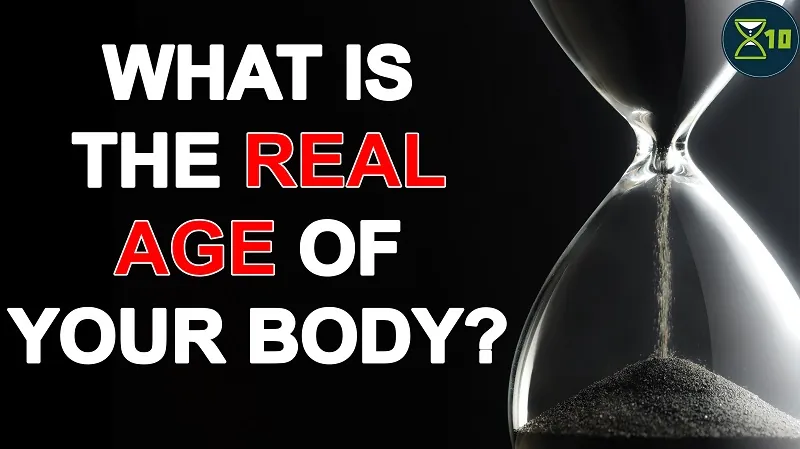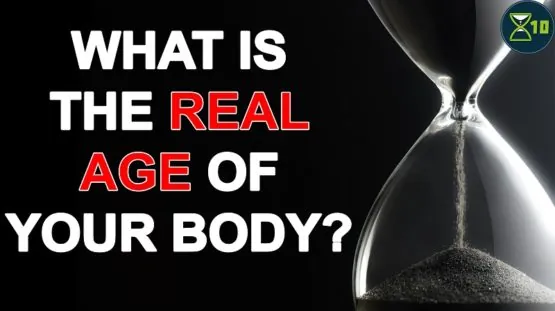On this episode of X10, we discuss how your chronological age might not match your biological age according to your epigenetics; you might be physically older or younger than your date of birth says you are.
Script
We’ve mentioned epigenetic clocks in several X10 episodes, and there’s no doubt that they’ll come up again in the future. Researchers have started using epigenetic clocks to estimate age, but what does that actually mean? Stick around to find out.
Welcome to X10, your one-stop YouTube show for all things life extension. Learn the science, keep up with new research, and live longer and healthier. If you want to get notified when we release new episodes, subscribe below, press the bell icon, and select “all notifications”.
Understanding what an epigenetic clock is first requires understanding epigenetics. In a nutshell, epigenetics refers to structures and modifications that affect how genes are expressed without changing the DNA sequence itself. We made a series about epigenetics and aging, so check that out if you want to know more.
For now, you just need to know about a type of epigenetic change known as DNA methylation. Methylation is the attachment of a molecule known as a methyl to DNA. The presence or absence of methyls affects how active a gene is. The methylation pattern throughout the genome changes in response to various factors, including age. This prompted scientists to wonder whether the methylation pattern could be used to estimate age.
That’s the basic idea behind an epigenetic clock: measuring the amount of methylation at various locations in the genome to estimate age. To develop the clocks, researchers collected DNA from lots of people of different ages, measured the amount of methylation at many sites in the genome, and then analyzed these to identify genomic sites where the methylation status correlates with age. In other words, you can predict a person’s age reasonably accurately based on the methylation status of these sites in their genome.
There’s an interesting wrinkle here in terms of what we mean by ‘predicting age’, and smoothing out that wrinkle reveals a pretty useful feature of epigenetic clocks. The clocks were designed to capture the link between an aspect of our biology, DNA methylation, and chronological age, which is simply the number of years that someone has lived. But what happens if the relationship between those two changes? For example, lifestyle choices or diseases can make biological markers like DNA methylation look more like those of an older person.
In that case, an epigenetic clock would report that the person is older than the number of years since they were born. That mismatch is the difference between biological age, as measured by epigenetic clocks or other biomarkers, and chronological age. The distinction between biological age and chronological age predates epigenetic clocks – it goes back to at least the 1980s – but epigenetic clocks are one of the most effective tools we have for estimating biological age. They can be extremely useful in figuring out whether a lifestyle choice or therapeutic intervention increases or decreases biological age compared to chronological age.
For that to really make sense, epigenetic clocks should also be good predictors of things like longevity and mortality. In other words, if an epigenetic clock says you’re biologically younger, that should mean you’ll live longer. Work is ongoing to figure out whether that’s really true. The first epigenetic clocks were published in 2013, and others have been developed since then.
Studies have looked at how well these clocks correlate with things like age-related disease, all-cause mortality, and longevity. A 2019 systematic review surveyed all of the studies published at the time. They concluded that the studies demonstrate a link between epigenetic age and all-cause mortality but found that the data for longevity and age-related diseases were still inconclusive.
Some newer epigenetic clocks were explicitly designed to use methylation patterns that are linked to the effects of aging — basically, the analysis behind them was based on age-related changes rather than age itself. These epigenetic clocks were better at predicting things like walking speed, grip strength, and cognitive performance than the older clocks, so it seems they might be better measures of biological age.
Related to this is the question of what an epigenetic clock actually measures. The various clocks use different sites in the genome based on what tissues and species were included and how the analysis was done. In some cases, these sites are linked with genes that are related to aging or development, but it’s not always that clear. By figuring out what these sites are and how they’re linked to aging, scientists might be able to get a better idea of what aging actually is and how it’s controlled.
A pretty exciting advance in that regard is a paper published on bioRxiv in 2021 by Steve Horvath, who is perhaps the doyen of epigenetic clocks. Horvath assembled and analyzed a huge amount of data to create a few universal epigenetic clocks for mammals. In other words, he identified a collection of sites shared across all 128 mammal species in the study that can be used to estimate age based on DNA methylation.
This seems like it will be a really useful tool, and it’s also pretty cool, but there’s a more important point here. The fact that the same sites can be used in all of these species – from rats to elephants to whales – suggests that at least some aspects of aging are happening the same way in all of them. In other words, this universal mammal clock is a credible demonstration that aging is a collection of processes with evolutionarily conserved underpinnings, and it also gives us a tool to start identifying those underpinnings and figure out how they work.
Hopefully this broad overview has given you a good idea of what epigenetic clocks are, how they’re developed, and why they’re useful. If you’d like to learn more about them, have a look at the references in the description. And if you’d like to keep updated about developments with epigenetic clocks and the research they’re enabling, click Subscribe to be informed when we publish videos.
Thanks once again to the Lifespan Heroes, whose support makes it possible for us to keep you informed about longevity research. If you’d like to play a part in that, head to lifespan.io/hero and make a pledge.




